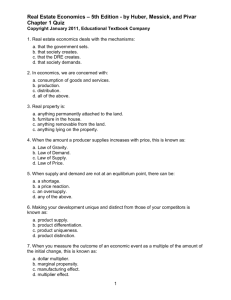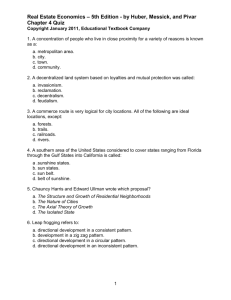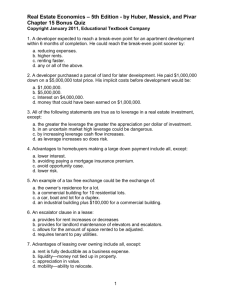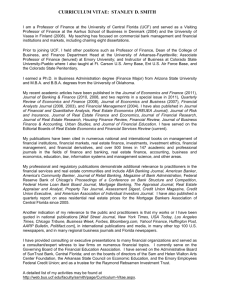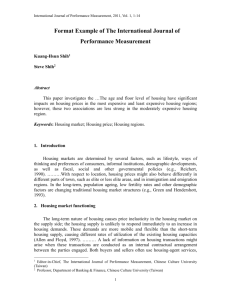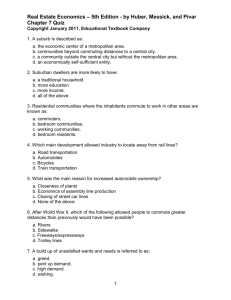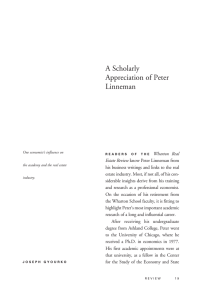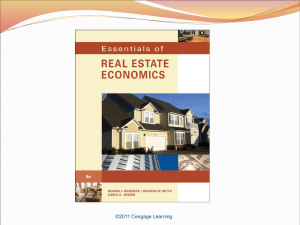Chapter 1 Bonus Quiz
advertisement
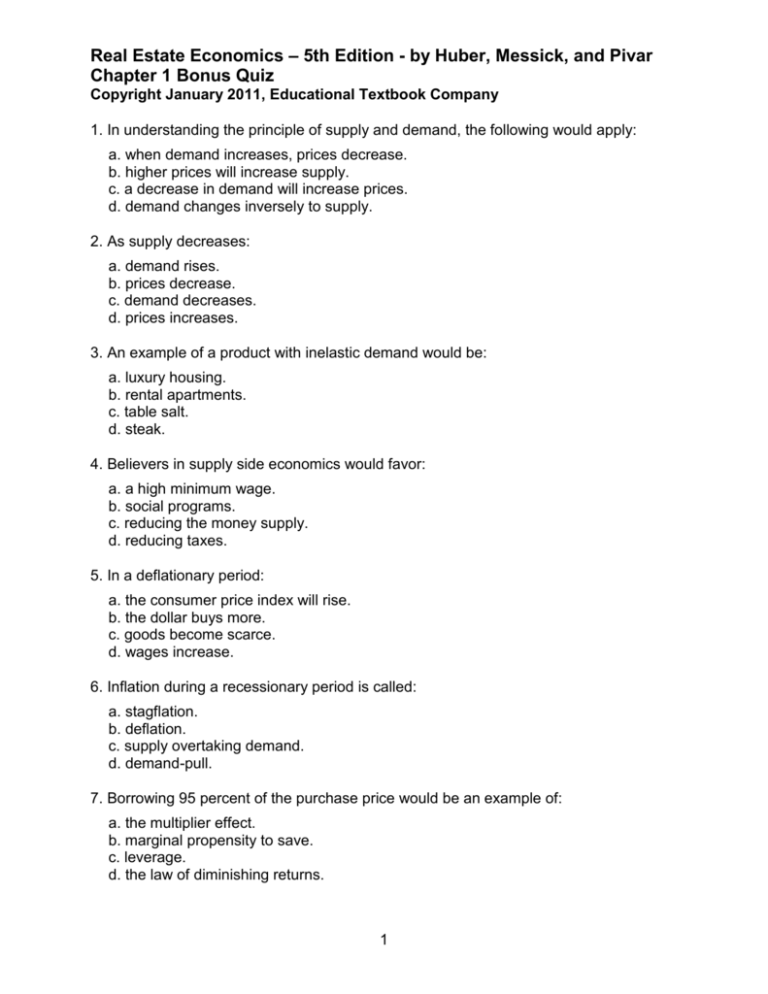
Real Estate Economics – 5th Edition - by Huber, Messick, and Pivar Chapter 1 Bonus Quiz Copyright January 2011, Educational Textbook Company 1. In understanding the principle of supply and demand, the following would apply: a. when demand increases, prices decrease. b. higher prices will increase supply. c. a decrease in demand will increase prices. d. demand changes inversely to supply. 2. As supply decreases: a. demand rises. b. prices decrease. c. demand decreases. d. prices increases. 3. An example of a product with inelastic demand would be: a. luxury housing. b. rental apartments. c. table salt. d. steak. 4. Believers in supply side economics would favor: a. a high minimum wage. b. social programs. c. reducing the money supply. d. reducing taxes. 5. In a deflationary period: a. the consumer price index will rise. b. the dollar buys more. c. goods become scarce. d. wages increase. 6. Inflation during a recessionary period is called: a. stagflation. b. deflation. c. supply overtaking demand. d. demand-pull. 7. Borrowing 95 percent of the purchase price would be an example of: a. the multiplier effect. b. marginal propensity to save. c. leverage. d. the law of diminishing returns. 1 8. A builder discovered when production was doubled, the cost per unit fell by 8 percent. This is an example of: a. the law of diminishing returns. b. economies of scale. c. assemblage. c. plottage increment. 9. Which is most nearly the opposite of subdividing? a. Principle of first choice c. Principle of competition c. Economic obsolescence d. Assemblage 10. A buyer refused to pay the list price because an equally desirable property was available for less money. This is an example of the: a. principle of change. b. principle of substitution. c. principle of first choice. d. principle of competition. 11. The demand for real estate can best be described as: a. seasonal. b. unsteady. c. elastic. d. none of the above. 12. The bottom of a business cycle is called: a. the trough. b. recovery. c. expansion. d. stagnation. 13. Our nation’s monetary policy is controlled by: a. the forces of supply and demand. b. the Federal Reserve. c. our fiscal policy. d. the U.S. Treasury. 14. What is the point called where the demand and supply curves cross? a. Equilibrium b. Balance point c. Axis point d. Point of no return 15. A market where there are few sellers and many buyers is called a: a. buyer’s market. b. bull market. c. bear market. d. seller’s market. 2 Real Estate Economics – 5th Edition - by Huber, Messick, and Pivar Chapter 1 Bonus Quiz Answers Copyright January 2011, Educational Textbook Company 1. b (p6-8) 2. d (p6) 3. c (p11) 4. d (p14) 5. b (p14) 6. a (p16) 7. c (p16) 8. b (p19) 9. d (p20) 10. b (p22) 11. c (p12) 12. a (p25) 13. b (p10) 14. a (p9) 15. d (p13) 3
